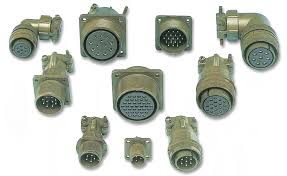
Glass fiber market
The scope of our recent study on the “Float Glass Market Forecast to 2028 – COVID-19 Impact and Global Analysis – by Type (Clear Glass, Tinted Glass, Textured Glass, and Others) and Application (Automotive and Transportation, Building and Construction, Electronics, and Others)” includes the factors fueling the market growth, revenue estimation and forecast, and market share analysis, along with the identification of significant market players and their key developments.
Increase in Demand from Building & Construction Industry
Float glass is manufactured through a melting process, where recycled glass, lime, silica sand, potash, and soda are melted in a furnace and floated onto a bed of molten tin. Float glass is being increasingly used in the building & construction industry, which comprises the residential, commercial, and industrial sectors. The glass has a high degree of light transmission, the ability to produce a range of colors and opacities, and good chemical inertness, which propels its demand from the construction industry. The float glass is used for windows and doors in the residential sector, serving both aesthetic and functional applications. It is also being increasingly utilized in interior design and modern architecture. In the commercial sector, float glass is in demand as it provides an attractive and easy-to-maintain exterior surface. Float glass offers light and heat transmittance, influencing the amount of heating and cooling required inside a building according to different seasons and climates. The float glass is also being used as display windows in the retail outlets due to its transparent nature, hardness, and ease of cleaning.
Get Free Sample PDF Download – https://bit.ly/3MX5Ak1
The float glass market was valued at US$ 53,709.30 million in 2020 and is projected to reach US$ 86,984.42 million by 2028; it is expected to grow at a CAGR of 5.2% from 2021 to 2028. Float glass is an extremely smooth and distortion-free glass. The glass is used in various end-use industries, such as building and construction, automotive, electronics, and solar. It is made by pouring the molten glass from a furnace into a chamber, which contains a bed of molten tin. The increasing use of float glass in interior design and modern architecture and in building and construction applications, such as ceiling, flooring, reflective, coated, windows, mirrors, tabletops, and insulated glass, propels the demand for float glass. In addition, the growing use of float glass in automotive applications is expected to drive the growth of the float glass market during the forecast period.
Due to the rise in environmental concerns, there has been an increased demand for float glasses in the construction industry as they help in achieving Leadership in Energy and Environment Design (LEED) certification for residential and commercial constructions. The rise in consumer awareness about the safety of buildings and an increase in focus on maintaining the government’s building codes are expected to boost the demand for float glasses. Thus, the increasing demand for float glasses from the building & construction industry would fuel the growth of the float glass market during the forecast period.
About Us:
The Insight Partners is a one stop industry research provider of actionable intelligence. We help our clients in getting solutions to their research requirements through our syndicated and consulting research services. We specialize in industries such as Semiconductor and Electronics, Aerospace and Defense, Automotive and Transportation, Biotechnology, Healthcare IT, Manufacturing and Construction, Medical Device, Technology, Media and Telecommunications, Chemicals and Materials.
Contact Us:
If you have any queries about this report or if you would like further information,
please contact us:
Contact Person: Sameer Joshi
E-mail: sales@theinsightpartners.com
Phone: +1-646-491-9876







